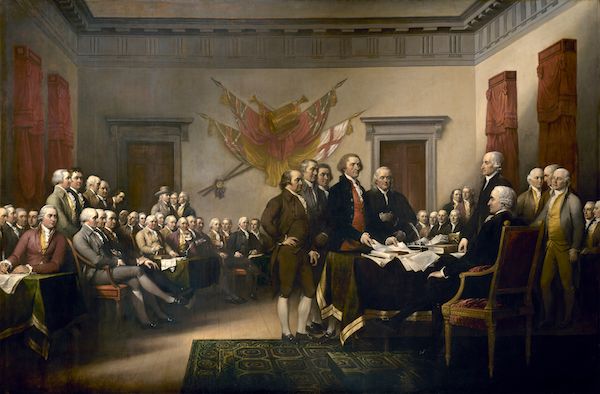Digital, “Wet”, Faxed or Implied–knowing the right signature to use is beginning to get confusing. Here are advisory articles published by two federal agencies to help you figure out what you need know.
Sources: Social Security Administration, USDA New Mexico
Social Security Administration Digitizes or Removes Signature Requirements for Many Forms
“Move Eases Burden on Millions of Customers”
Today, the Social Security Administration (SSA) announced progress this year to reduce customer burden by transitioning wet (physical) signature requirements to digital signatures for over 30 forms as well as removing the signature requirements altogether for 13 forms. These actions simplify application processes for people, including removing a potential reason for claims to be sent back or denied.

“Across forms that Americans use most often, we’re eliminating as many pain points as possible, from helping people sign at the click of a button to reducing the need to drive or mail something in whenever possible,” said Martin O’Malley, Commissioner of Social Security. “This means faster and more error-free processing and better service for our customers, who deserve a government that meets their needs efficiently and effectively.”
As a result of this work, SSA will now allow an electronic signature rather than a wet signature for more than 30 forms, which make up 90% of the most commonly used forms by SSA customers in local field offices. Collectively, these forms represent about 14 million signed forms submitted annually.
Furthermore, also this year, SSA has removed the signature requirement entirely for 13 of its most commonly used forms totaling about 1 million submissions in volume annually. This includes removing the signature requirement for the Medical Source Opinion of Patient’s Capability to Manage Benefits (Form SSA-787, which has a total annual volume of 768,000), the Letter to Employer Requesting Wage Information (Form SSA-L4201, which has an annual volume of 133,000), and Request for Reconsideration/Disability Cessation Right to Appear (Form SSA-789, which has an annual volume of 49,000). Customers may also upload many of the 13 forms online, further reducing the burden felt by customers.
To build on this progress, SSA is considering removal of signature requirements on other forms that would ease requirements on about 1 million additional transactions.
Social Security works to pay the right people at the right time in the correct amount. These efforts ensure we maintain strong anti-fraud protections while removing onerous requirements that are not serving their intended purposes.
These efforts also complement other initiatives to modernize and streamline operations. The agency is expanding paperless communication options for the millions of my Social Security users so they can see their online Social Security Statement, track the status of their claims, and calculate potential retirement benefits. Notices from across 60 categories are now provided through my Social Security for easy online access by customers, including the Cost-of-Living Adjustment, their SSA-1099, Benefit Rate Increases, Appointment Confirmations, and more.
New my Social Security account holders can choose online-only communications with one click, and others are encouraged to transition for an enhanced experience.
Social Security is undertaking this work in alignment with the Executive Order on Transforming Federal Customer Experience and Service Delivery to Rebuild Trust in Government (E.O. 14058), the Office of Management and Budget’s (OMB) guidance Delivering a Digital-First Public Experience (M-23-22), and OMB guidance Improving Access to Public Benefits Programs Through the Paperwork Reduction Act (M-22-10).
To hear directly from Commissioner O’Malley and learn more about the efforts to remove wet signature requirements, visit the agency’s YouTube page.
For more information on online services visit Online Services | SSA. To create a mySocial Security account, please visit www.ssa.gov/myaccount.
USDA New Mexico Bureau–Using the correct signature when doing business with FSA can save time and prevent a delay in program benefits.
The following are FSA signature guidelines:
- Married individuals must sign their given name.
- Example—Mary Doe and John Doe are married. When signing FSA forms, each must use their given name, and may not sign with the name of their spouse. Mrs. Mary Doe may not sign documents as Mrs. John Doe. For Farm Loan Purposes, spouses may not sign on behalf of the other as an authorized signatory, a signature will be needed for each. For a minor, FSA requires the minor’s signature and one from the minor’s parent. There are certain exceptions where a minor’s signature may be accepted without obtaining the signature of one of the parents. Despite minority status, a youth executing a promissory note for a Youth Loan will incur full personal liability for the debt and will sign individually.
Note: By signing a document with a minor, the parent is liable for actions of the minor and may be liable for refunds, liquidated damages, or other penalties, etc.

When signing on one’s behalf the signature must agree with the name typed or printed on the form or be a variation that does not cause the name and signature to be in disagreement. Example – John W. Smith is on the form. The signature may be John W. Smith or J.W. Smith or J. Smith. Or Mary J. Smith may be signed as Mrs. Mary Joe Smith, M.J. Smith, Mary Smith, etc.
FAXED signatures will be accepted for certain forms and other documents provided the acceptable program forms are approved for FAXED signatures. Producers are responsible for the successful transmission and receipt of FAXED information.
Examples of documents not approved for FAXED signatures include:
- Promissory note
- Assignment of payment
- Joint payment authorization
- Acknowledgement of commodity certificate purchase
Spouses may sign documents on behalf of each other for FSA and CCC programs in which either spouse has an interest, unless written notification denying a spouse this authority has been provided to the county office.
Spouses cannot sign on behalf of each other as an authorized signatory for partnerships, joint ventures, corporations or other similar entities. Likewise, a spouse cannot sign a document on behalf of the other in order to affirm the eligibility of oneself.
Any member of a general partnership can sign on behalf of the general partnership and bind all members unless the Articles of Partnership are more restrictive. Spouses may sign on behalf of each other’s individual interest in a partnership, unless notification denying a spouse that authority is provided to the county office. Acceptable signatures for general partnerships, joint ventures, corporations, estates, and trusts must consist of an indicator “by” or “for” the individual’s name, individual’s name and capacity, or individual’s name, capacity, and name of entity.






